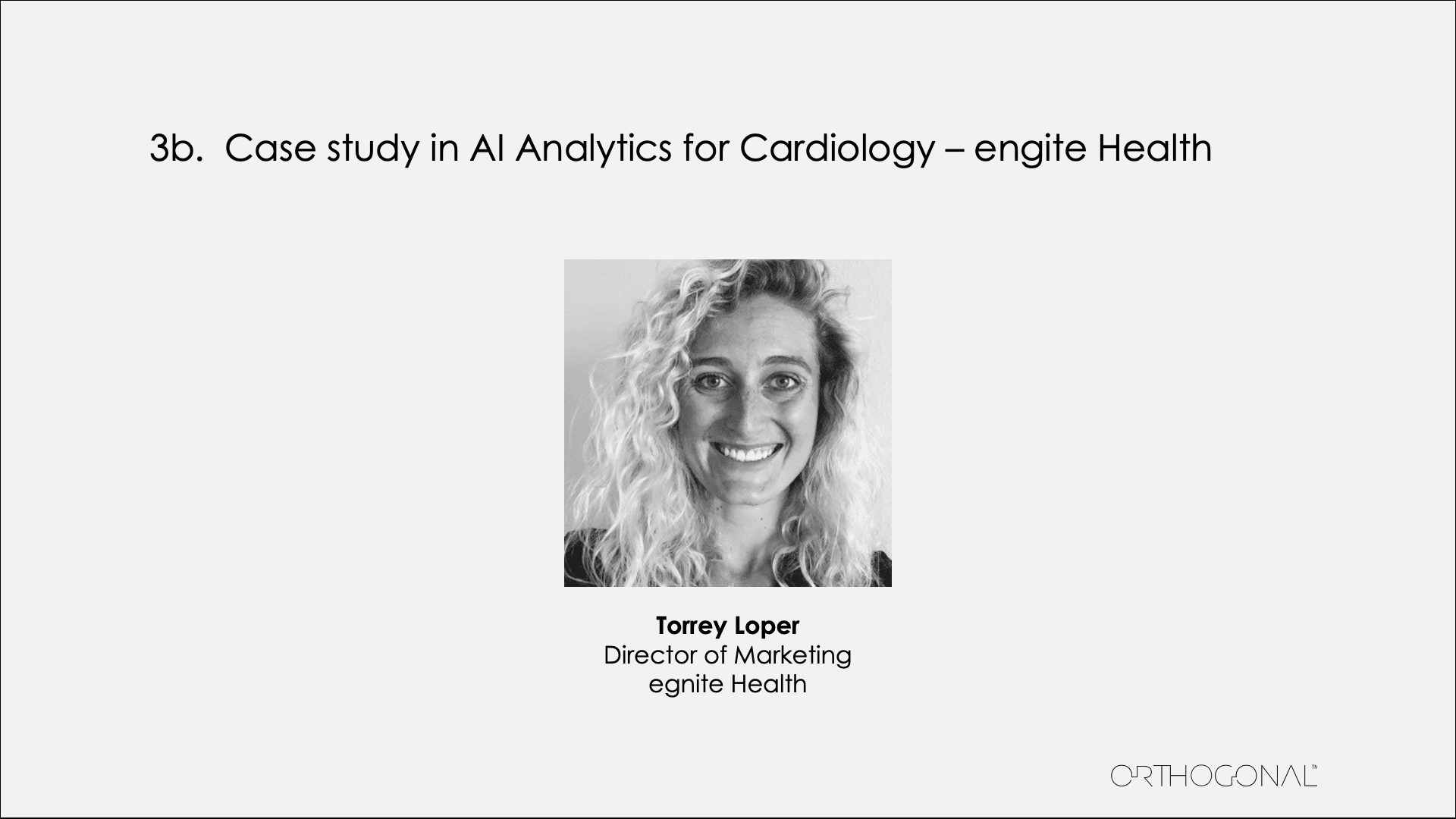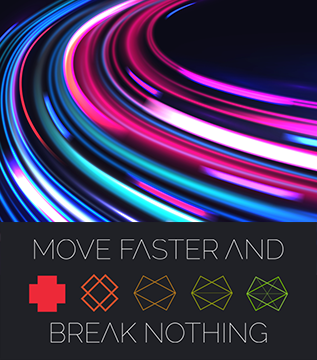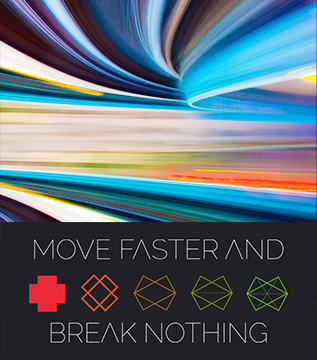
Talk
What Medical Device Software to Develop Under QMS: Webinar Summary

Torrey Loper:
Thank you, Mark, for the really great segue.
My name’s Torrey Loper. I’ve spent the past 10 years marketing medical devices and medical software. I’m one of the founding members of egnite Health, responsible for developing the egnite brand, managing our marketing department and ultimately our commercial execution.

A quote in the Orthogonal opener really resonated with me. It was about how in the future, all MedTech companies will become software companies. That’s really something that our organization is living and breathing today. I’ll take the audience through a case study of how our digital health company, egnite, spun out of a medical device company called Edwards Lifesciences.
CardioCare is the flagship product of egnite, which started out as a skunk work project at Edwards Lifesciences, incubated for around five years. It was just earlier this year, actually, that the CardioCare product spun out of Edwards to create the egnite startup organization. The CardioCare team was focused on applying digital health technologies to understand how we could improve the patient care pathway and reduce the undertreatment rates that we see in the market today.
Spinning out of Edwards Lifesciences allowed us to apply data science with the focus and speed of an entrepreneurial tech company. Over these past few months, we’ve been laser focused on understanding how we can continue to dive deep in our AI technologies within CardioCare to really elevate the standard of patient care.
At egnite, our vision is simple: Identifying every cardiovascular patient in America and improving their outcomes through our technologies and our AI platforms. There’s a problem we’ve seen in healthcare, and I’m sure the audience, as MedTech and pharmaceutical technologists, have seen it too. It’s the many different ways that patients can fall through the healthcare system.
These patients falter at different places along the path. Say, for example, they miss an appointment. It may be because of a poor scheduling system, or they delayed the appointment because they had a personal thing come up. So when they ultimately developed a significant disease, they either never saw the provider they needed to see or saw them a little too late – and their disease had progressed to a much worse state by then. At egnite, we’re specifically focused on applying our technologies to shore up the gaps in undertreatment for Structural Heart Disease.
Structural Heart Disease has a really robust treatment plan when a patient is diagnosed with a severe disease. Unfortunately, what we’ve seen is treatments across the five diseases that are expressions of Structural Heart Disease are as low as 50% or 10%. In addition to what we’re seeing for the undertreatment of the disease, when these patients are left untreated, mortality rates are really high. The survival rate at five years is as low as 20%, and of the surviving patients with some of these severe diseases, there’s around a 90% hospitalization rate for heart failure. If these patients are missed, they’re really sick, and it’s a large burden on the healthcare system for these physicians to focus on triaging their care.

That’s where egnite comes in with CardioCare. We’re at 50 hospitals and structural heart programs across the nation today, and we’re focused on using big data to solve big problems. What we have so far is around 1.2 million echocardiograms, a diagnostic exam looking at the heart, comprising a little over 800,000 patients. We leverage that data, through our connections at the hospital, to understand what the national trends are with this patient population.
We’re laser focused on applying our AI technologies to address patients with heart failure and then heart valve disease. What we do is stratify what those national trends look like, and then focus at the individual hospital level on what they’ve done to manage these large patient populations compared to the national averages.
At a high level, CardioCare is a population health solution that’s focused on helping providers. It is a Clinical Decision Support Software working to reduce mortality, ensure guideline-directed treatment and standardize quality for patients with Structural Heart Disease. From a data-processing perspective, we collect two core elements from each hospital that we partner with.
First, we collect diagnostic echocardiograms from the hospital’s picture archiving and communications system. Secondly, we get clinical data from the data warehouse that powers all of the other technologies and electronic medical record (EMR) systems at the hospital. Clinical data can be anything from labs to exams, referrals, treatments, symptom statuses and medication – it can give a really broad view of a patient. We combine both kinds of data in our high-trust certified cloud environment, process it with our AI technologies and then push it back down to the hospital.
We’re expanding the technology to help physicians elevate the standard of care. That looks like applying big data processing techniques to a hospital’s entire data system in order to pull out which patients have cardiovascular disease. From there, we prioritize care for patients that are eligible for life-saving treatment. We deliver insights on-demand to clinicians that are managing these large patient populations. We’re also applying our predictive algorithms to pinpoint which patients may be at risk for progressing to severe disease or having an undiagnosed severe disease, and prioritizing those patients for clinician follow-up.
What I’ve described is just a snapshot of what the Clinical Decision Support Software looks like. Like I’ve said, it’s focused on delivering actionable insights to physicians and prioritizing patients for follow-up. When a physician uses our software, what they see is the result of combining those different data sets: applying all of our different AI technologies for structured and unstructured data; combining different data sets together; reading through diagnoses with our natural language processing; and applying all of those different diagnoses that a clinician has made within our database to give providers a broad snapshot of where their patients are within the hospital system today.
It’s pretty surprising that EMRs today don’t have the ability to show providers exactly all of their patients within the system. Rather than show the full view of patients that are untreated and may need to be prioritized for care, they only show the patients that are coming in to get treated.
When we apply our AI technologies, we can really get our arms around those big patient populations, allowing us to identify the patients that need to be treated now per the guidelines, and also pick out the patients in the future that physicians need to follow up with – the ones that are most at risk according to our predictive algorithms.
We believe content and channel delivery is key to driving clinician adoption to this technology. Content delivery means focusing on the most actionable patients within a provider system today. If a physician only has five minutes, we are going to give them a snapshot of the top 10 patients that are class one candidates and eligible for therapy, so they can review and triage.
Channel delivery compliments that. Clinicians have really, really busy days. They’re not always going to be sitting at their desk and going through their computer. Their focus is being with their patients. So we put this information in front of the clinicians where they are. We send emails, or text messages, with the same type of information that would be in the software. It’s more on the go and available to them.
Finally, I want to discuss our focus areas to drive adoption, especially in this novel market. Clinical evidence is key. As we’re creating the market for ourselves in this new space, we must ensure that we’re developing a robust body of clinical evidence, because at the end of the day, clinicians need to see the efficacy of the product.
Sure, we have all of our V&V documentation from the algorithms testing and from our pipeline, but what we really need to do is demonstrate the accuracy of the algorithms on bench testing and then ultimately from what we’re observing in the real world. Because we have this large database, we’re able to identify trends in care and opportunities in which care can be elevated. Bringing that to light within the medical community is really important.
Secondly comes the thought leadership piece. We’re driving this body of evidence, and getting clinicians to speak about how they’re applying these technologies in a really practical way within their practice.
I’ll close here by saying that clinical evidence is definitely a strategic priority of ours. We have more than a few publications ready to go out next year talking about the accuracy of our predictive algorithms. Last week, we were just published in the Journal of American Cardiology, where we talked about the accuracy of our predictive algorithm and how it identifies the progression from moderate to severe aortic stenosis. Thank you for your time.
Randy Horton:
That’s terrific Torrey. In watching these really awesome and abstract presentations, I found it really motivating to see how these tools can be applied to move the needle on human health – for people I know personally, too. As we say, it’s a good reason to get up in the morning. Congratulations to you all.
Below is a list of the other sections of our Move Faster & Break Nothing Webinar:
Related Posts

Talk
What Medical Device Software to Develop Under QMS: Webinar Summary

Talk
Sizing up SaMD Projects for Success: Webinar

Talk
3 Tools You Need for SaMD App Development: Webinar

Talk
Blending Agile Practices With Industry Regulations: Webinar